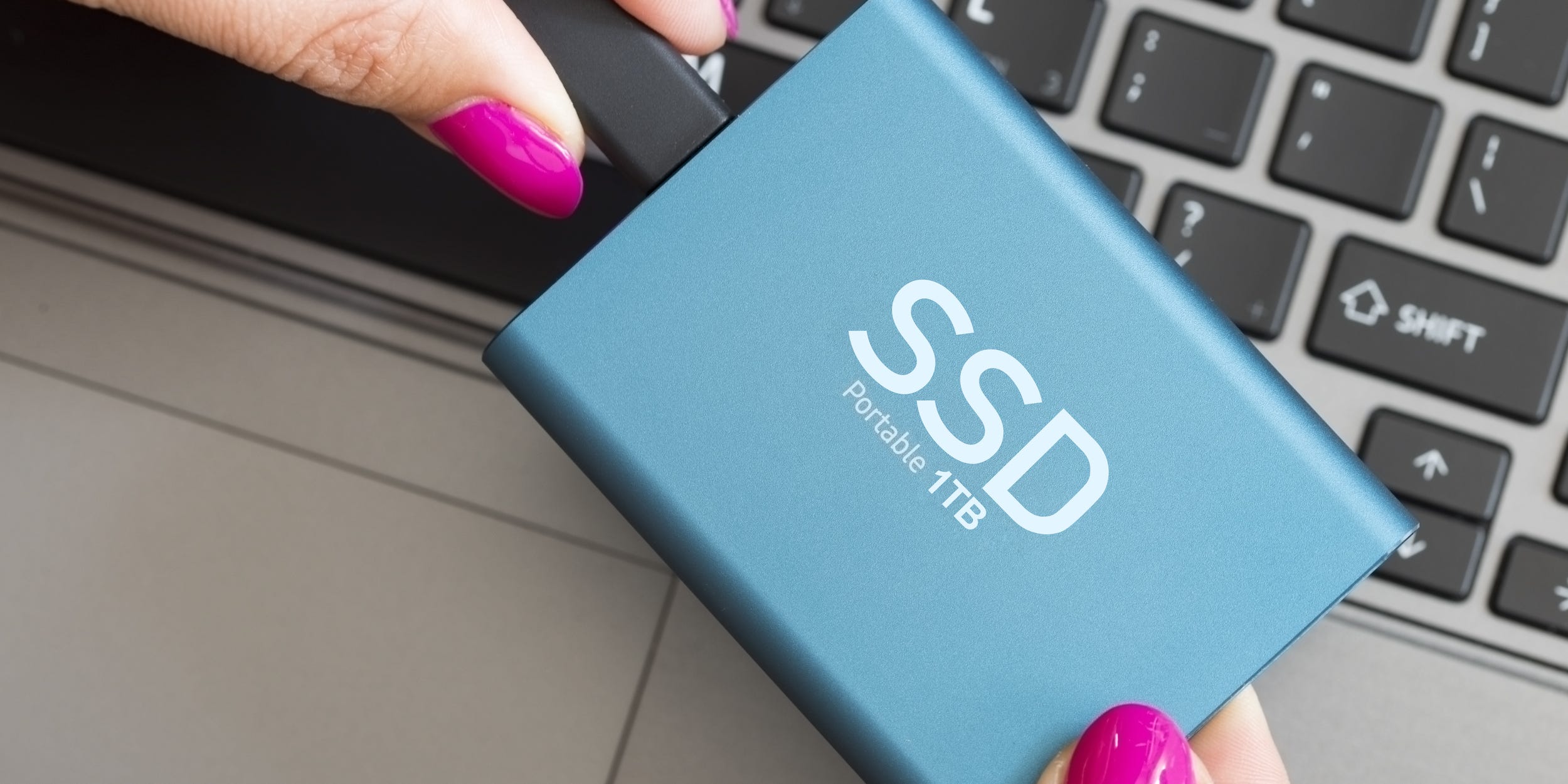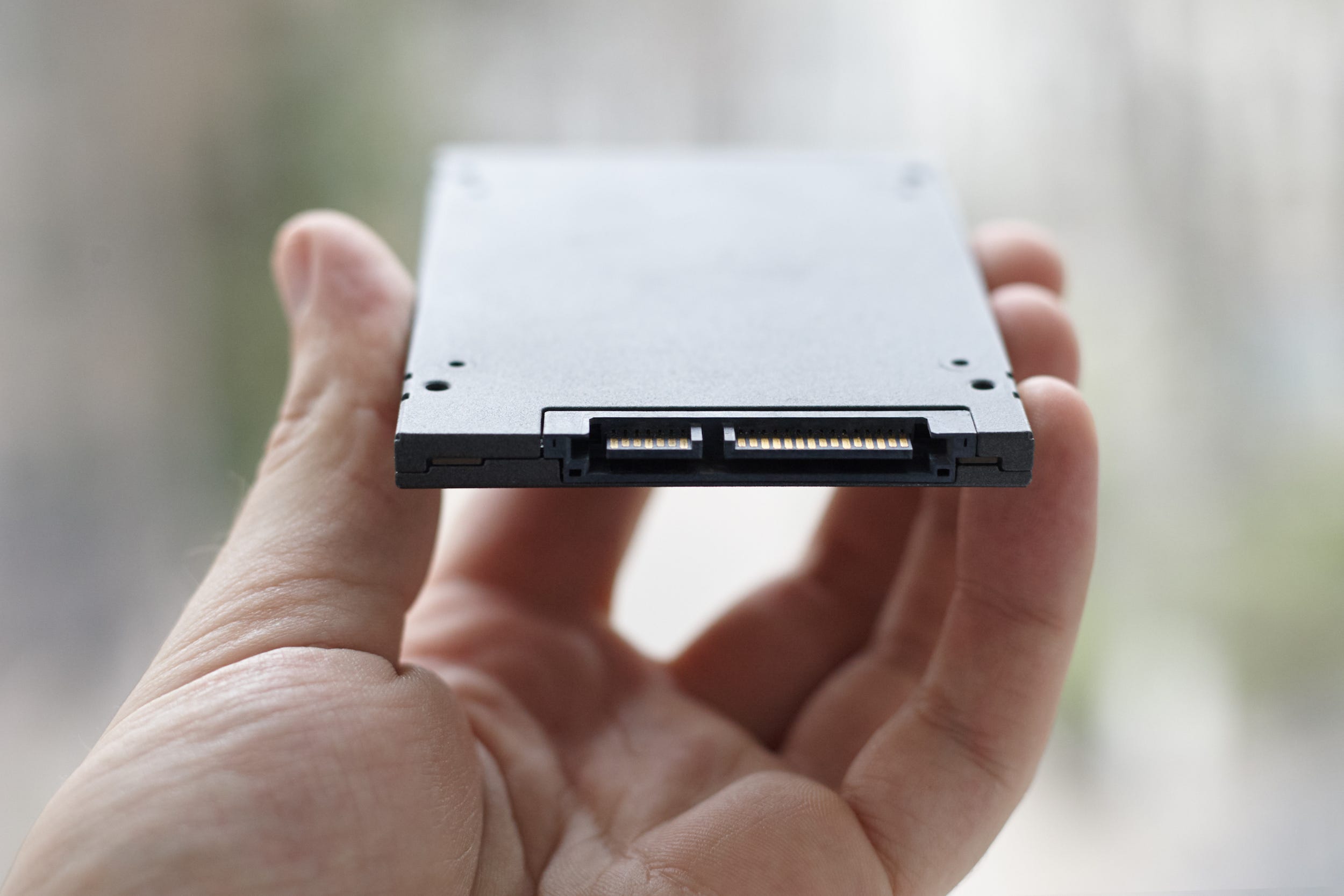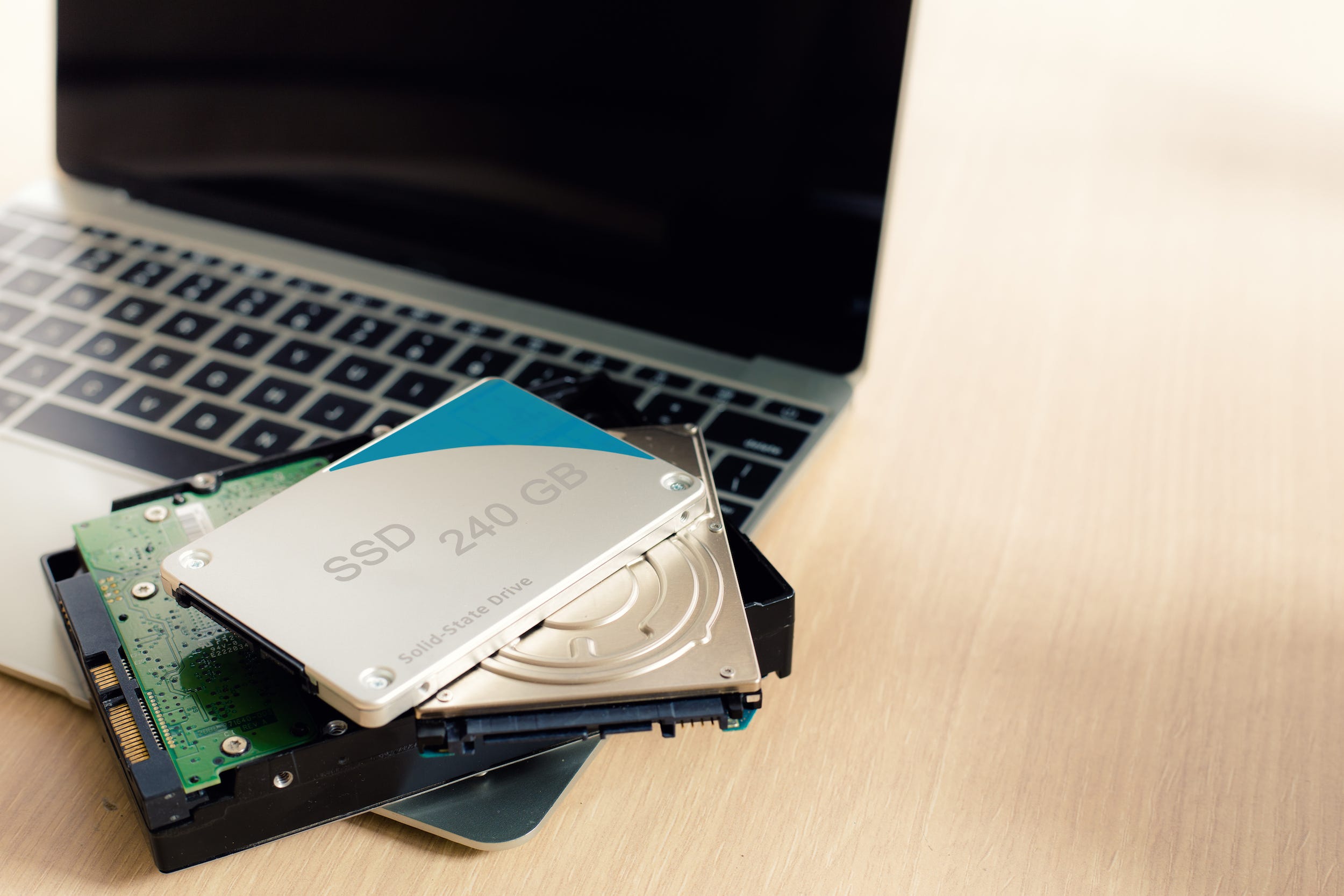
adrian825/Getty Images
- A solid state drive (SSD) is an external storage device for your computer that works like a USB flash drive.
- An SSD has no moving parts and is more reliable than the traditional hard drives it’s replacing.
- Visit Business Insider’s Tech Reference library for more stories.
In the last few years, solid state drives (SSDs) have largely replaced traditional hard drives, especially in laptops.
SSDs work in a fundamentally different way from hard drives. Here’s everything you should know about solid state drives.
How an SSD works
Like a hard drive, an SSD is used to store large volumes of data whether the system is on or off, for extended periods of time. But unlike hard drives, an SSD has no moving parts, and is more akin to a flash drive.

Andrii Atanov/Getty Images
Instead of reading and writing data to a spinning platter, an SSD stores data on flash memory chips (sometimes referred to as NAND flash memory). In this way, an SSD is essentially no different than a USB flash drive, or the memory you’d find in a smartphone or tablet.
In addition to memory chips, an SSD also has a controller chip. The controller is responsible for knowing where data is stored on the device and can find requested data in nanoseconds – almost instantly – which makes SSDs very fast storage devices.
Where SSDs are used
You will find SSDs used anywhere that hard drives were previously employed - for consumer applications, that's primarily in desktop computers and laptops. SSDs are still relatively more expensive than hard drives (though the price difference continues to shrink) so some computer manufacturers will use a somewhat smaller SSD as the system drive in a computer and combine that with a large hard drive for storing data.

CASEZY/Getty Images
Even so, SSDs are generally cheap enough now that some users opt to install a single large SSD, or, in a multi-drive computer, make all the storage devices SSDs.
Types of SSDs
There are two common types of SSDs. The oldest form of SSD uses the now aging SATA III interface. This is a "legacy" connector that was originally designed for hard disk drives, and SSDs adopted this interface as well. It has the advantage of nearly universal compatibility, but is relatively slow. Some newer PCs don't have a SATA connector at all; this interface is being phased out.
Newer SSDs use the Nonvolatile Memory Express (NVMe) standard. This is a faster design with lower latency, and connects to computers via the PCIe interface rather than SATA. PCIe is the same interface that connects high-speed components like graphics cards and sound cards.
SSD advantages and disadvantages
SSDs have a lot of advantages compared to older hard drives. First and foremost, they have no moving parts and therefore last far longer and are much less susceptible to failure than hard drives. They also have the potential to be much faster, but are relatively more expensive and aren't readily available in very high capacities in the same way as hard drives. For more information, read our article comparing SSDs and HDDs.
Related coverage from Tech Reference:
-
How to partition a hard drive in Windows 10, and keep your most important files separate from the rest
-
How to update or reinstall your drivers in Windows 10 to keep your computer running smoothly
-
How to download Nvidia drivers to keep your computer's graphics running smoothly and vibrantly
-
Why is my computer fan so loud? 5 ways to troubleshoot a noisy computer
-
6 ways to cool down your computer when it overheats

